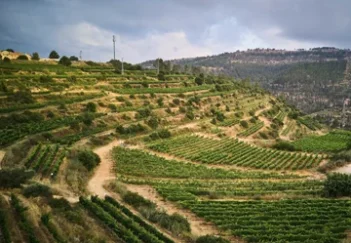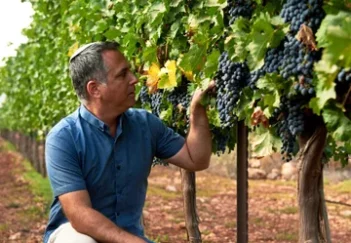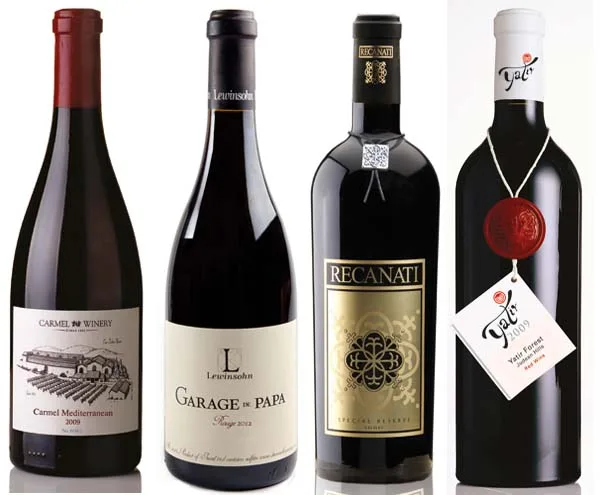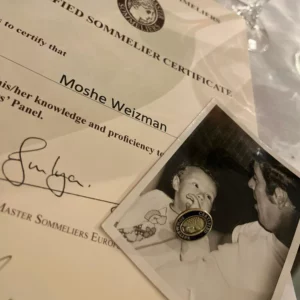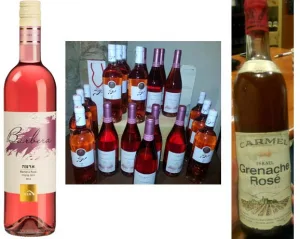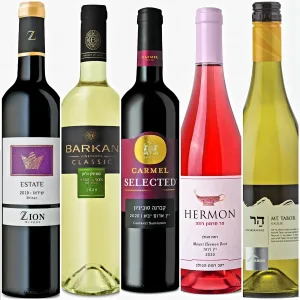We often tell prospective wine lovers, ‘Know the grape and you will know the wine.’ We then recommend they first learn about the seven classic varieties, (Cabernet Sauvignon, Merlot, Syrah, Pinot Noir, Chardonnay, Sauvignon Blanc and Riesling), before progressing to others.
These days, to know the varieties is not enough, because generic blends are becoming more popular. At wine tastings you will be told: ‘this is a Bordeaux style blend’ or ‘a Mediterranean style blend,’ with very little explanation.
Most wineries seem to have a wine they describe as a Bordeaux blend. Its most basic form is Cabernet Sauvignon blended with Merlot. The muscular Cabernet with the softer Merlot is a natural marriage and this is the most popular blend in wine.
The more traditional Bordeaux blend is one using the five main grape varieties of Bordeaux. This mainly includes Cabernet Sauvignon, Merlot, Cabernet Franc and to a lesser extent, Petit Verdot and Malbec.
The idea of making a blend in the first place, is to show off the qualities of various varieties whilst at the same time diminishing the deficiencies. All this is in the search for greater balance and complexity. The wine expert Steven Spurrier, immortalized in the film ‘Bottle Shock’, once described a Bordeaux red as being an ideal blend, because ‘the Cabernet Sauvignon provides firmness, the Cabernet Franc fragrance, the Merlot flesh, the Malbec spice and the Petit Verdot grip.
The idea of this blend, like any other, is to be better than the sum of its parts. Or to put more numerically, one plus one equals three.
Incidentally, different wineries have different ‘Bordeaux blends.’ For instance, Yarden Katzrin is a blend of just Cabernet Sauvignon and Merlot. The Yatir Forest is made from Cabernet Sauvignon, Petit Verdot and Merlot. The Castel Grand Vin and Carmel Limited Edition are blends of all five varieties. The only common denominator with these Israeli Bordeaux style blends is that Cabernet Sauvignon seems to be the dominant variety.
Interestingly in Israel, the relatively unknown Petit Verdot is becoming more and more influential in blends, sometimes featuring more than Merlot. The reason is that Petit Verdot, (‘the little green one’), often does not ripen in Bordeaux and it is now used less there, but there are no ripening problems here under the Israeli sun. Also the Cabernet Franc is usually a cooler climate variety. However in Israel, the extra ripeness achieved here can offset and balance the green, herbaceous character that not everyone likes. Both are finding a place here.
For the last 25 years the Bordeaux varieties and Bordeaux style blends have been symbols of the new ‘best in Israel.’ Lately though, there is now a discernible trend back to Mediterranean varieties, which is where we began over 130 years ago.
Winemakers noticed in the bad vintages, when the hamsin hot winds reign supreme, that certain varieties cope better with the high temperatures than others. They have realized that Israel is an Eastern Mediterranean country and that maybe Mediterranean varieties would be suitable here. This was something Baron Edmond de Rothschild’s agronomists knew in the 1880’s.
Furthermore, there is ongoing pressure from wine people everywhere, eager to know if there was an Israeli identity, style or grape variety. Customers are tired of endless Cabernet Sauvignons and Merlots which though good, are also available from Chile, Australia and everywhere else. Israeli wine producers are asked all the time “where is Israel’s individuality” and “what is Israel’s speciality”
No individual Mediterranean variety has yet taken off to such an extent that the answer to the question is obvious. Shiraz, Carignan and Petite Sirah have their followers. However, something called ‘the Mediterranean blend’ has. It is the new trend here.
The Mediterranean blend is a wine made with any number of Mediterranean varieties. The red wine grape varieties may be Carignan, Grenache, Marselan, Mourvèdre , Petite Sirah and last but certainly not least, Shiraz or Syrah.
These Med blends are edgy, less fruit forward, less jammy, less immediately accessible in the glass but no less complex. The wines have ripe fruit and spicy aromas, often with a meaty taste and a chewy, leathery texture.
The southern Rhone Valley is host to the most famous Mediterranean blend, Chateauneuf du Pape. This is the big Daddy of Mediterranean blends with up to thirteen varieties in the final wine. Languedoc Roussillon in France and Priorat in Spain are other regions where the med red blend thrives.
I suppose the whole category is symbolized by the classic trio of Grenache, Syrah and Mourvèdre. The Grenache supplies the perfume and bulk, the Syrah fruit and spice and the Mourvèdre texture and tannin. The Australians sharper on marketing than most, were the first to write this as GSM on the label, and it has stuck.
As far as Israel is concerned, Syrah is new here in the last 20 years. Mourvèdre was here when they first planted Mediterranean varieties in the 1880’s, but did not stay, whilst Grenache is an old friend, just returning.
The wineries leading the way with Mediterranean blends are Chateau Golan from the Golan Heights with their Geshem (a play on the initials GSM) and Sea Horse in the Judean Hills.
Carmel Mediterranean is a blend of six varieties, mainly Shiraz, Carignan and Petite Sirah, not quite up to the number of Chateauneuf du Pape, but on the way! The other leaders of the move to Mediterranean wines are Shvo Vineyards, with a GSM blend plus Barbera, and Lewinsohn Red, a blend of Syrah, Carignan and Petite Sirah.
This brings about the question: What is better, a blend or a varietal wine (made from a single variety) Many people are accustomed to thinking that blends are cheap. This is surely because the cheapest wine in most wineries is often a blend of all the leftovers. It is usually found in a dumpy bottle on the lowest shelf of the supermarket or alternatively it may be the wine that meets you on the table at a function, with a label you have never seen before.
However a blend may also be the pinnacle of the winemaker’s art. The winemaker, taking the place of the chef, will take ‘a little bit of this and a little bit of that’, to enhance the final product. This will entail selecting and separating fruit from individual plots in the vineyard or only using specifically chosen barrels after rigorous tastings, in order to create a jigsaw of tastes and flavors that is the height of complexity.
I suppose a varietal wine is like cooking an ingredient on its own. The taste and flavor is purer and more predictable. A wine from a single grape variety essentially expresses the characteristics of that grape. Cabernet Sauvignon will smell and taste like Cabernet Sauvignon. A blend though is similar to cooking a number of ingredients together. It may be more representative of the terroir, than any one variety. A varietal will be more angular, a blend broader.
I don’t want to mislead anyone by describing things in such black and white terms. In Israel, a varietal needs a minimum of 85% of the dominant varietal. So it may be called Cabernet Sauvignon, but 15% may be other varieties. So many varietals are in fact blends!
However if you wanted to know, which is better, the blend or varietal There is no answer. Some of the most inexpensive wines are blends, as are some of the most expensive wines in the world. And exactly the same may be said about varietal wines.
Of course there are numerous permutations. For instance the prizewinning Recanati Special Reserve is a blend of Bordeaux varieties and Mediterranean varieties, but that is fodder for another article. In the meantime the Bordeaux blend and Mediterranean blend have a high profile and will continue to battle for our affections in the years to come.












